Michael Jackson’s Ghosts, often hailed as the “King of Pop,” was a pivotal figure in the world of entertainment, renowned for his spectacular music, groundbreaking dance moves, and pioneering music videos. His artistic versatility spanned across singing, dancing, and even filmmaking, marking him as a true multifaceted artist. Beyond his chart-topping hits and iconic performances, Jackson ventured into cinematic projects that further showcased his creative genius.
One such project is “Ghosts,” a short film released in 1996 that stands out for its unique blend of music, dance, and storytelling. Directed by Stan Winston, a maestro of visual effects renowned for his work in movies like “Jurassic Park” and “Terminator,” and co-written by famed horror novelist Stephen King along with Mick Garris, “Ghosts” was an ambitious endeavor. The film was based on an original story by Jackson, King, and Garris, crafting a narrative that intertwined Jackson’s musical prowess with cinematic storytelling.
“Ghosts” is not just a film but a 38-minute musical experience that features elaborate dance sequences set to a medley of songs from Jackson’s albums “HIStory” and “Blood on the Dance Floor: HIStory in the Mix.” It narrates the tale of an eccentric man with supernatural abilities who is confronted by the fearful and narrow-minded residents of a small town. Through this narrative, the film explores themes of alienation and acceptance, mirroring the trials Jackson faced in his own life.
The collaboration between Jackson, Winston, and King in creating “Ghosts” highlighted a rare fusion of talents from different realms of entertainment, culminating in a piece that remains significant in the annals of pop culture. The film not only exemplifies Jackson’s artistic range but also his unyielding commitment to challenging the conventions of art and entertainment.
| Aspect | Details |
|---|---|
| Project | “Ghosts” – A short film released in 1996 |
| Director | Stan Winston |
| Co-writers | Stephen King and Mick Garris |
| Origin | Based on an original story by Michael Jackson, Stephen King, and Mick Garris |
| Music Albums Featured | “HIStory” and “Blood on the Dance Floor: HIStory in the Mix” |
| Themes | Alienation and acceptance, reflecting personal trials of Michael Jackson |
| Significance | Exemplifies Jackson’s artistic range and commitment to challenging artistic conventions |
Contents
Background and Development
“Michael Jackson’s Ghosts” began its journey with an initial vision titled “Is It Scary?” The project was initially conceptualized as a short film to be released in conjunction with the family comedy film “Addams Family Values.” The concept aimed to blend Michael Jackson’s thematic elements of horror and mystery with the quirky, gothic atmosphere of the Addams Family, thereby appealing to a broad audience that included younger viewers. This unique integration was envisioned as a promotional strategy to leverage the popularity of both entities.
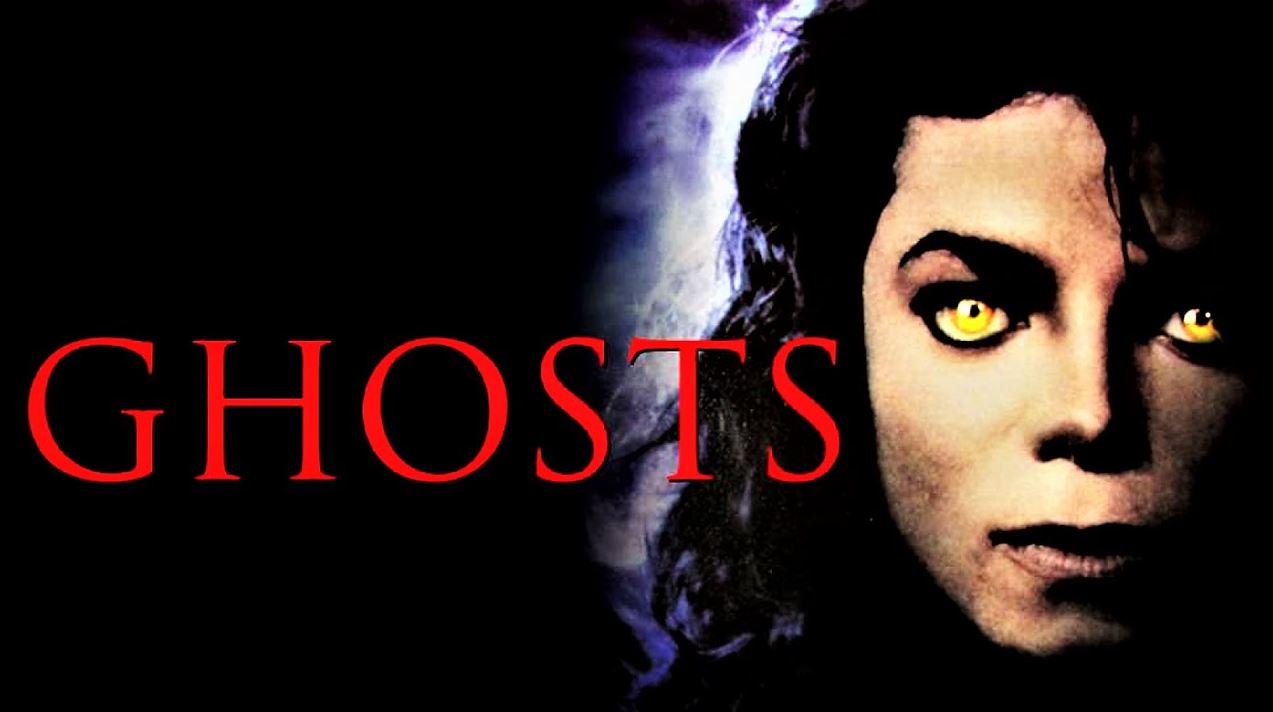
As the project evolved, significant changes occurred, starting with a pivotal shift in the directorial role. Originally, Mick Garris, known for his work in the horror genre, was set to direct the film. However, creative differences and scheduling conflicts led to a reevaluation of the direction of the project. Stan Winston, who had initially joined as a makeup and visual effects specialist, took over the directorial duties. Winston, with his profound expertise in visual storytelling and effects, brought a new dimension to the project, steering it away from the initial “Addams Family” tie-in towards a standalone Michael Jackson feature that could more fully showcase his vision and artistic ambitions.
The budget for “Ghosts” was another testament to its ambitious scale. Funded entirely by Michael Jackson, the project’s budget ballooned to an estimated $15 million, making it one of the most expensive music videos ever produced. This investment reflected not only Jackson’s commitment to his artistic vision but also his willingness to push the boundaries of what could be achieved in the merging of film and music. The high budget was allocated towards high-quality special effects, elaborate set designs, and intricate dance choreographies, all of which were integral to the film’s aesthetic and narrative impact.
| Aspect | Details |
|---|---|
| Initial Vision | Project titled “Is It Scary?” intended as a short film to be released alongside “Addams Family Values”. |
| Original Concept | Blend of horror, mystery, and the quirky, gothic atmosphere of the Addams Family. |
| Original Director | Mick Garris |
| Directorial Change | Stan Winston replaced Mick Garris due to creative differences and scheduling conflicts. |
| Project Evolution | Shifted from an “Addams Family” tie-in to a standalone Michael Jackson feature. |
| Budget | $15 million, funded entirely by Michael Jackson, making it one of the most expensive music videos ever produced. |
| Investment Focus | High-quality special effects, elaborate set designs, and intricate dance choreographies. |
Plot Overview
The plot of “Ghosts” centers around a mysterious figure known as the Maestro, played by Michael Jackson, who resides in a grandiose mansion on the outskirts of the fictional town of Normal Valley. The Maestro possesses supernatural abilities and entertains local children with his magical tricks and ghost stories. However, his eccentricities and the mysterious aura surrounding his mansion evoke the suspicions and fears of the town’s adults, led by the narrow-minded mayor who perceives the Maestro as a threat to normalcy.
One of the film’s pivotal scenes is the “scaring contest” orchestrated by the Maestro in response to the townspeople’s attempt to drive him out. This contest serves as a dramatic and visual climax of the film, showcasing Jackson’s hallmark dance abilities intertwined with cinematic special effects. The Maestro, using his supernatural powers, summons a series of ghostly figures and performs intricate dance routines to the songs “2 Bad,” “Is It Scary,” and “Ghosts.” These performances are not just entertainment but also a defiant expression of the Maestro’s identity and a challenge to the town’s prejudices.
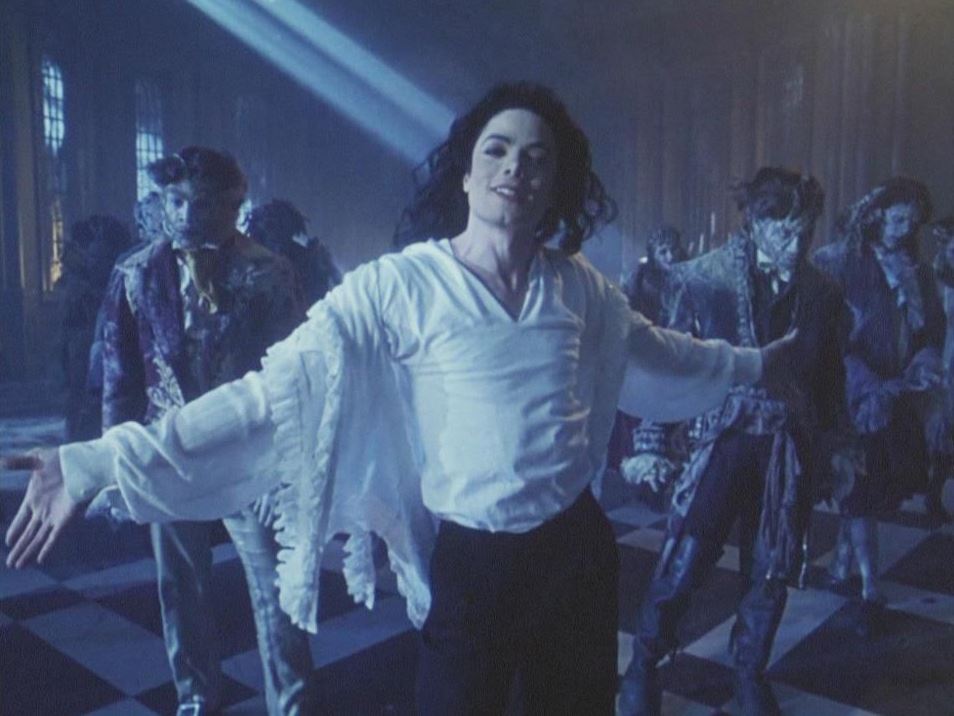
The climax of the film occurs when the Maestro, after dazzling and disorienting the mayor and his supporters with his performances, transforms into an enormous ghoul. This transformation is both a literal and metaphorical representation of the Maestro embracing his otherness rather than concealing it. Terrified by this revelation, the mayor inadvertently reveals his own fears, leading to his defeat in the contest. The scene culminates with the mayor fleeing, and the townspeople, now seeing the harmless fun in the Maestro’s antics, invite him to remain.
“Ghosts” weaves together themes of acceptance and the celebration of individuality, wrapped in a visually stunning package of dance and music, all set against the backdrop of a narrative that mirrors Michael Jackson’s own experiences with judgment and isolation. Through its intricate development and dramatic storytelling, the film not only entertains but also delivers a poignant commentary on societal perceptions of normalcy and otherness.
| Aspect | Details |
|---|---|
| Main Character | The Maestro, played by Michael Jackson, a mysterious figure with supernatural abilities. |
| Setting | A grandiose mansion on the outskirts of Normal Valley. |
| Conflict | The town’s adults, led by the mayor, are suspicious and fearful of the Maestro’s eccentricities and supernatural activities. |
| Key Scene | “Scaring contest” where the Maestro uses his powers to summon ghostly figures and performs to “2 Bad,” “Is It Scary,” and “Ghosts.” |
| Climax | The Maestro transforms into a giant ghoul, terrifying the mayor and leading to his defeat. |
| Resolution | The townspeople, recognizing the harmless fun in the Maestro’s antics, invite him to stay. |
| Themes | Acceptance, celebration of individuality, commentary on societal perceptions of normalcy and otherness. |
Cast and Characters
In “Ghosts,” Michael Jackson demonstrated his versatile acting skills by portraying multiple characters, each with distinct traits and narratives. The primary role of the Maestro features Jackson as a mysterious and charismatic figure with supernatural abilities, who uses his powers to both entertain and challenge the prejudices of the townspeople. In a dual role, Jackson also plays the Mayor of Normal Valley, embodying the skepticism and fear of the unknown that often characterizes societal leaders. The transformative roles of Mayor Ghoul, Superghoul, and Skeleton further showcase Jackson’s ability to shift between personas, each representing different aspects of fear and acceptance within the film’s allegorical framework.
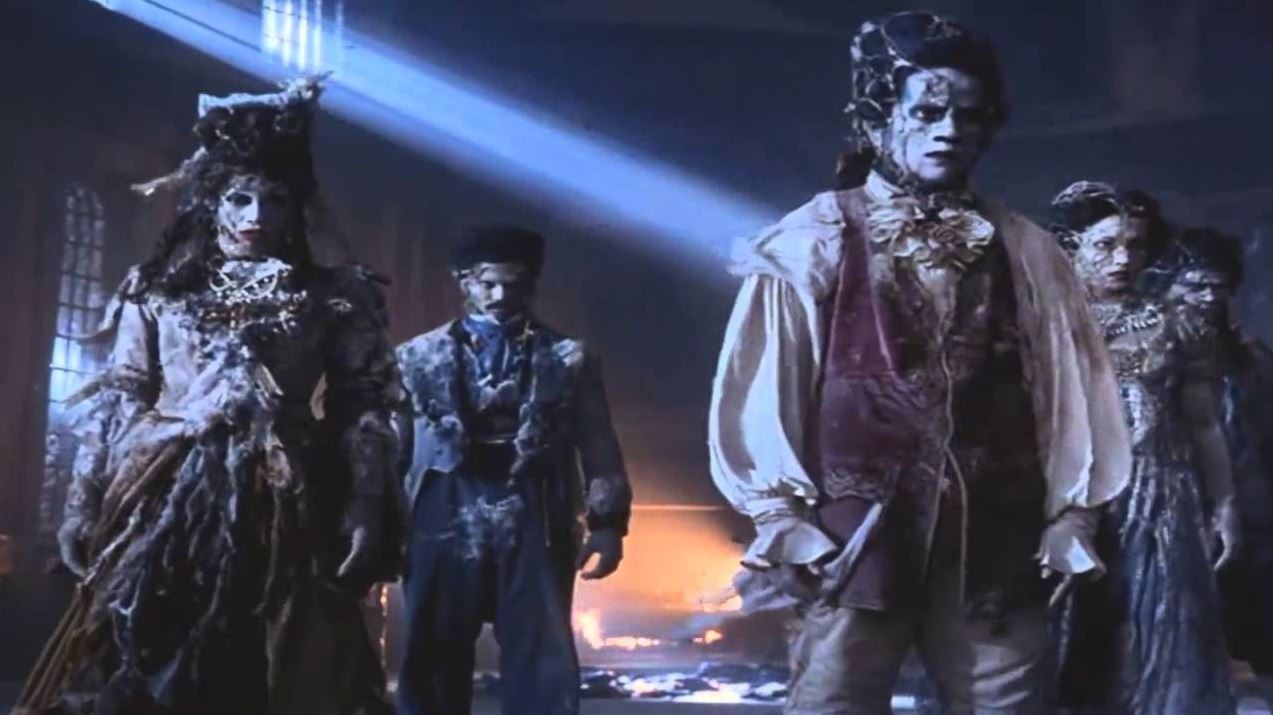
The film also features a range of supporting actors who add depth and context to the story. Pat Dade, Amy Smallman, Edwina Moore, and Dante Beze play townsfolk who interact with Jackson’s characters, providing a canvas against which the story’s themes of exclusion and misunderstanding are painted. Their performances contribute to the film’s emotional impact, portraying the range of human reactions from fear to fascination.
| Character | Actor | Role Description |
|---|---|---|
| The Maestro | Michael Jackson | A mysterious, charismatic figure with supernatural abilities, challenging societal prejudices. |
| The Mayor | Michael Jackson | Represents skepticism and fear of the unknown, typical of societal leaders. |
| Mayor Ghoul | Michael Jackson | A transformation of the Mayor character, depicting aspects of fear within the film’s narrative. |
| Superghoul | Michael Jackson | Another transformative role showing a more intense representation of fear and otherness. |
| Skeleton | Michael Jackson | Represents the ultimate stripping away of external appearances to reveal underlying truths. |
| Townsfolk | Pat Dade, Amy Smallman, Edwina Moore, Dante Beze | Characters who react variously with fear, fascination, and acceptance, painting the story’s themes of exclusion and misunderstanding. |
Production Details
Filming for “Ghosts” took place in 1996, with many scenes shot in elaborate sets that were designed to create a gothic and eerie atmosphere fitting the film’s tone. The primary location was a constructed mansion that served as the Maestro’s haunting residence, complete with intricate decor and a grandiose aesthetic that emphasized the film’s surreal qualities.
The production of “Ghosts” faced several challenges, particularly in its ambitious scope and the high expectations set by its creative team. The transition in directors from Mick Garris to Stan Winston brought about a significant shift in the film’s direction, necessitating adjustments in the creative approach and re-alignments of the project’s goals. The extensive use of special effects, both practical and computer-generated, also presented challenges, requiring meticulous planning and execution to seamlessly integrate these elements with live-action performances.
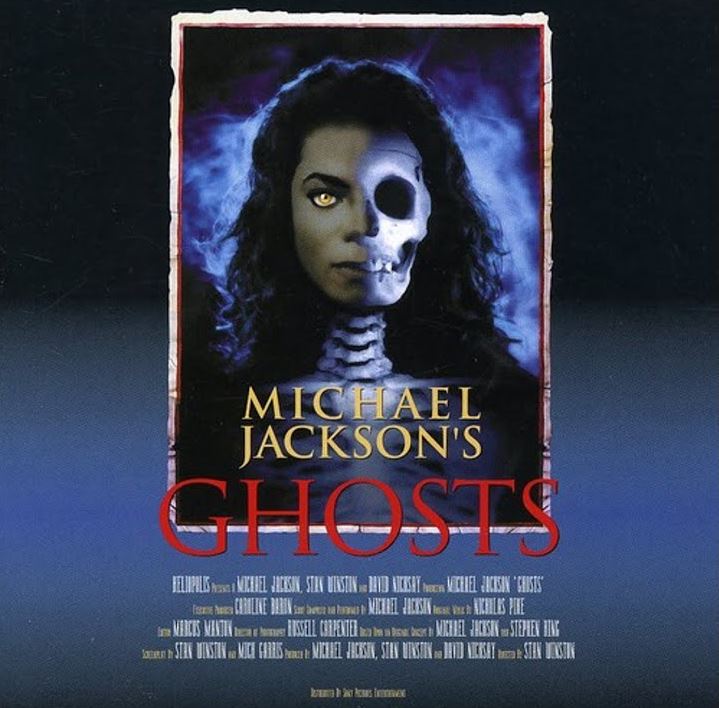
Dance sequences are a hallmark of “Ghosts” and a significant aspect of its storytelling, with Michael Jackson using dance both as a form of expression and as a narrative device. Choreographers LaVelle Smith Jr., Travis Payne, and Barry Lather were instrumental in designing these sequences, which range from hauntingly beautiful to intensely thrilling. Each choreographed piece not only highlights Jackson’s exceptional dance skills but also serves to advance the plot, symbolizing the Maestro’s internal and external battles.
The choreography in “Ghosts” extends beyond mere performance; it is interwoven with the film’s themes of confrontation and acceptance. The dance battles, especially in the scaring contest scene, are metaphoric duels between the Maestro and the Mayor, reflecting broader conflicts between individuality and societal norms. The involvement of a large ensemble of dancers, including Michael Balderrama, Troy Burgess, and Heather Harley, adds to the visual spectacle, creating immersive and dynamic scenes that captivate the audience.
Overall, “Ghosts” stands out not only for its compelling narrative and innovative music but also for its intricate production details. From the multifaceted roles played by Michael Jackson to the challenges of filming and the significance of its choreography, each element contributes to a richly layered artistic work. The film remains a testament to Jackson’s creativity and his ability to push the boundaries of what can be achieved in the crossover space between music and cinema.
| Aspect | Details |
|---|---|
| Filming Year | 1996 |
| Set Design | Gothic and eerie atmosphere, highlighted by a constructed mansion as the Maestro’s residence. |
| Directorial Transition | Shift from Mick Garris to Stan Winston, necessitating changes in creative approach and project alignment. |
| Special Effects | Extensive use of both practical and computer-generated effects, requiring meticulous planning and execution. |
| Choreography | Designed by LaVelle Smith Jr., Travis Payne, and Barry Lather, using dance as expression and narrative device. |
| Symbolism in Dance | Dance sequences serve as metaphoric duels, reflecting conflicts between individuality and societal norms. |
| Key Dancers | Michael Balderrama, Troy Burgess, Heather Harley, contributing to dynamic and immersive scenes. |
Video Music and Soundtrack
“Michael Jackson’s Ghosts” is enriched by its powerful musical score, featuring songs that encapsulate the thematic essence of the film. “2 Bad,” “Is It Scary,” and “Ghosts” serve as more than just background music; they are integral to the narrative, enhancing the emotional depth and the dramatic arcs of the storyline.
“2 Bad,” from the album “HIStory: Past, Present and Future, Book I,” underscores themes of confrontation and resilience. Its rhythm and aggressive tone complement scenes where the Maestro confronts the townspeople’s accusations and prejudices, using dance as his rebuttal. “Is It Scary,” from the remix album “Blood on the Dance Floor: HIStory in the Mix,” delves into themes of fear and misunderstanding, mirroring the Maestro’s eerie yet misunderstood character. Finally, “Ghosts,” also from “Blood on the Dance Floor,” plays during pivotal moments where the supernatural aspects of the Maestro’s persona are fully unleashed, encapsulating the film’s climax of acceptance versus fear.
The original orchestral score for “Ghosts” was composed by Nicholas Pike, known for his ability to blend classical elements with contemporary sounds. Pike’s compositions provide a haunting backdrop that elevates the film’s gothic atmosphere and intensifies the emotional impact of the visual effects and choreography. The orchestration adds a layer of sophistication and depth, bridging the gap between the film’s visual spectacles and its narrative complexity.
| Music Aspect | Details |
|---|---|
| Songs Featured | “2 Bad,” “Is It Scary,” and “Ghosts” |
| Themes in “2 Bad” | Confrontation and resilience; complements scenes of the Maestro using dance to confront prejudice. |
| Themes in “Is It Scary” | Themes of fear and misunderstanding; mirrors the Maestro’s eerie yet misunderstood character. |
| Themes in “Ghosts” | Plays during supernatural displays; encapsulates climax of acceptance versus fear. |
| Orchestral Score Composer | Nicholas Pike |
| Role of Orchestral Score | Provides a haunting backdrop that elevates the gothic atmosphere and intensifies the emotional impact of the film. |
Release and Reception
“Ghosts” made its debut at prestigious venues, initially showcased at the 1997 Cannes Film Festival. This screening was significant as it positioned the film within the international cinema community, highlighting its artistic ambitions beyond the typical music video or pop culture release. The presentation at Cannes helped to solidify Jackson’s reputation as an innovator in merging the worlds of music and film.
The film saw a unique home media release, particularly in Europe where a Deluxe Collector Box Set was issued in December 1997. This set included the VHS of the “Ghosts” mini-movie and the “Blood on the Dance Floor” album on CD, along with a CD maxi single featuring the track “On the Line.” This collector’s edition was aimed at die-hard fans and collectors, offering an exclusive package that included much of the content surrounding the film’s release.
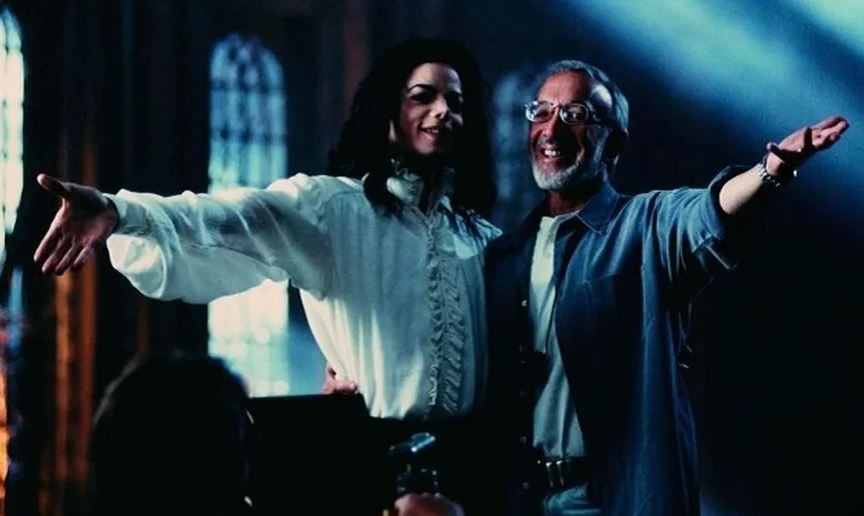
The reception of “Ghosts” was mixed, with some critics praising its innovative integration of music and storytelling, while others critiqued it for its perceived heavy-handedness in delivering its message. Nathan Rabin of The A.V. Club described the film as “clunky, leaden, and overblown,” and critiqued it as a “staggeringly blunt” allegory of Jackson’s own experiences with public scrutiny and media intrusion. This criticism reflects a broader discourse on the film’s ambitious yet potentially overwrought narrative and thematic execution.
However, despite the critiques, “Ghosts” has been appreciated for its technical achievements and Jackson’s performance. The film’s ability to combine high-quality visual effects, dance, and music into a cohesive narrative that explores deep and personal themes is seen as a testament to Jackson’s artistic vision. Over time, it has gained a cult following, particularly among Jackson’s fans and enthusiasts of musical cinema, who view it as an essential piece of his legacy that showcases his multifaceted talents and his commitment to pushing the boundaries of his art form.
| Aspect | Details |
|---|---|
| Premiere | 1997 Cannes Film Festival; positioned the film within the international cinema community. |
| Home Media Release | Deluxe Collector Box Set in Europe, December 1997, including the VHS, “Blood on the Dance Floor” CD, and a CD maxi single of “On the Line.” |
| Critical Reception | Mixed reviews; praised for innovative integration of music and storytelling but critiqued for heavy-handedness in delivering its message. |
| Critic Commentary | Nathan Rabin described the film as “clunky, leaden, and overblown,” viewing it as a blunt allegory of Jackson’s personal experiences with media. |
| Legacy | Despite mixed critiques, it is celebrated for its technical achievements and Jackson’s performance, gaining a cult following over time. |
Cultural Impact
Michael Jackson’s “Ghosts” serves as a profound allegory for his personal and public experiences, effectively mirroring the scrutiny and isolation he faced throughout his career. In the film, the Maestro—portrayed by Jackson—represents an artist misunderstood and vilified by society, much like Jackson himself. The narrative confronts themes of prejudice, fear, and the stigmatization of those who differ from societal norms. These themes resonate deeply with Jackson’s own encounters with the media and public opinion, especially during times of intense personal scrutiny. Through “Ghosts,” Jackson explores the impact of being labeled and ostracized, offering a window into his struggles with being perpetually in the public eye, often misunderstood by those around him.
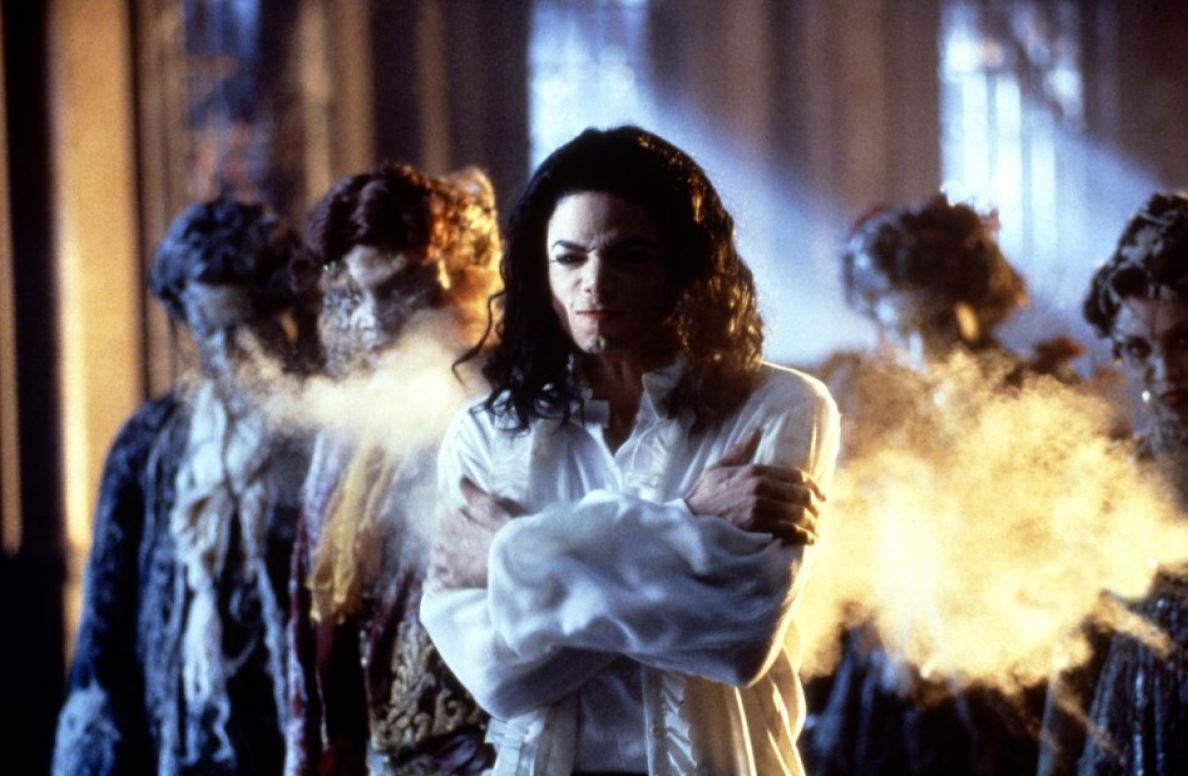
Until 2013, “Ghosts” held the Guinness World Record for the longest music video, a testament to its ambitious scope and Jackson’s dedication to pushing artistic boundaries. This record not only underscores the film’s length but also its complexity and the depth of its production, which went far beyond traditional music video formats. The innovative blend of narrative film-making, music, and dance helped set a new standard for what could be achieved in the music video medium. Despite being surpassed by Pharrell Williams’ “Happy,” “Ghosts” continues to be relevant in discussions about the evolution of music videos and their potential for storytelling and cultural expression.
| Aspect | Details |
|---|---|
| Allegorical Significance | Represents Michael Jackson’s personal experiences with public scrutiny and isolation, exploring themes of prejudice and stigmatization. |
| Narrative Themes | Confronts fear and societal norms, reflecting Jackson’s own encounters with media and public opinion. |
| Guinness World Record | Held the record for the longest music video until 2013, demonstrating its ambitious scope and complexity. |
| Cultural Impact | Set a new standard for music videos, blending narrative filmmaking, music, and dance to enhance storytelling in the medium. |
| Legacy | Continues to be relevant in discussions about the evolution of music videos and their capacity for cultural expression. |
“Ghosts” remains a pivotal work in Michael Jackson’s illustrious career, showcasing his artistic versatility and his willingness to delve into complex, often personal themes. The film reflects his unique ability to combine his musical and dance talents with a deep narrative structure, creating a work that is not only entertaining but also thought-provoking. It stands out as an example of how Jackson used his platform to address and challenge societal issues, making a statement against the quick judgments and prejudices that he faced personally.
Artistically, “Ghosts” is a significant piece of Michael Jackson’s legacy, illustrating his role as a pioneer in the integration of music and film. Culturally, it captures a moment in time when pop culture was grappling with themes of otherness and acceptance, themes that remain relevant today. The film’s allegory speaks volumes about the experience of cultural outsiders and the often harsh judgments they endure, providing a broader commentary on acceptance and understanding in society.
In summary, “Ghosts” not only enriched Michael Jackson’s artistic expression but also contributed a significant chapter to the narrative of pop culture, challenging audiences to reflect on the complexities of identity and acceptance. Its lasting impact is seen in how it continues to engage new generations of viewers, offering insights into the life of one of pop music’s most iconic figures, as well as the societal themes that are as relevant today as they were when the film was first released. This enduring relevance underscores the profound impact that art can have in shaping and reflecting cultural conversations.

